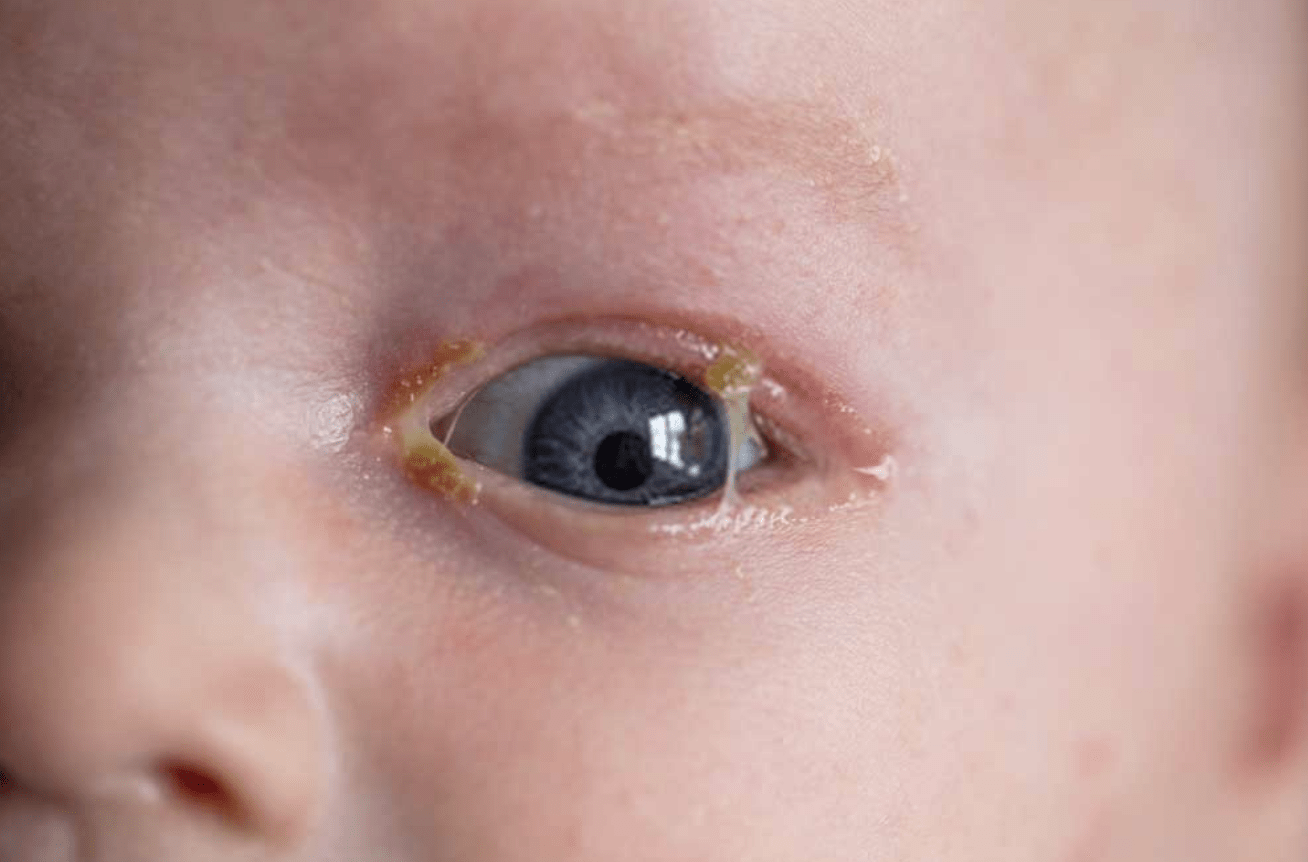Is your infant’s eye discharge yellow? This could be a sign of a serious infection. Yellow eye discharge in infants is a common problem, but it’s important to know when to seek medical attention.
Editor’s Note: This article on “yellow eye discharge infant” has been published today, March 8, 2023, to provide parents and caregivers with important information about this condition.
Our team has done extensive research and analysis to put together this comprehensive guide to help you understand the causes, symptoms, and treatment of yellow eye discharge in infants. We hope this information will help you make the best decisions for your child’s health.
Key Differences:
| Cause | Symptoms | Treatment |
|---|---|---|
| Bacterial infection | Yellow or green discharge, redness, swelling, pain | Antibiotic eye drops or ointment |
| Viral infection | Clear or yellow discharge, redness, tearing | No specific treatment, supportive care |
| Allergic reaction | Itching, redness, tearing | Antihistamine eye drops or ointment |
Main Article Topics:
- Causes of yellow eye discharge in infants
- Symptoms of yellow eye discharge in infants
- Treatment for yellow eye discharge in infants
- When to seek medical attention
- Preventing yellow eye discharge in infants
Yellow Eye Discharge in Infants
Yellow eye discharge in infants is a common problem, but it can be a sign of a serious infection. It is important to know the key aspects of this condition in order to make the best decisions for your child’s health.
- Causes: Bacterial infection, viral infection, allergic reaction
- Symptoms: Yellow or green discharge, redness, swelling, pain
- Treatment: Antibiotic eye drops or ointment, antihistamine eye drops or ointment
- When to seek medical attention: If your infant’s eye discharge is yellow or green, or if it is accompanied by other symptoms such as redness, swelling, or pain
- Prevention: Wash your hands frequently, avoid touching your infant’s eyes, and keep their environment clean
These are just a few of the key aspects of yellow eye discharge in infants. By understanding these aspects, you can make informed decisions about your child’s health.
Causes
Yellow eye discharge in infants can be caused by a variety of factors, including bacterial infection, viral infection, and allergic reaction. Bacterial infections are the most common cause of yellow eye discharge in infants, and they are typically caused by bacteria such as Staphylococcus aureus or Streptococcus pneumoniae. Viral infections can also cause yellow eye discharge, and they are typically caused by viruses such as the adenovirus or the herpes simplex virus. Allergic reactions can also cause yellow eye discharge, and they are typically caused by allergens such as pollen, dust, or pet dander.
It is important to understand the different causes of yellow eye discharge in infants in order to provide the best possible treatment. Bacterial infections require antibiotic treatment, while viral infections do not. Allergic reactions can be treated with antihistamines or other medications.
In most cases, yellow eye discharge in infants is a minor problem that will resolve on its own within a few days. However, it is important to seek medical attention if the discharge is severe, if it is accompanied by other symptoms such as fever or irritability, or if it does not improve after a few days.
| Cause | Symptoms | Treatment |
|---|---|---|
| Bacterial infection | Yellow or green discharge, redness, swelling, pain | Antibiotic eye drops or ointment |
| Viral infection | Clear or yellow discharge, redness, tearing | No specific treatment, supportive care |
| Allergic reaction | Itching, redness, tearing | Antihistamine eye drops or ointment |
By understanding the different causes of yellow eye discharge in infants, parents and caregivers can make informed decisions about the best course of treatment.
Symptoms
The symptoms of yellow eye discharge in infants can vary depending on the underlying cause. However, some of the most common symptoms include:
- Yellow or green discharge
- Redness
- Swelling
- Pain
These symptoms can be caused by a variety of factors, including bacterial infection, viral infection, and allergic reaction. It is important to understand the different causes of yellow eye discharge in infants in order to provide the best possible treatment.
Bacterial infections are the most common cause of yellow eye discharge in infants. Bacterial infections are typically caused by bacteria such as Staphylococcus aureus or Streptococcus pneumoniae. These bacteria can cause a variety of symptoms, including yellow or green discharge, redness, swelling, and pain.
Viral infections can also cause yellow eye discharge in infants. Viral infections are typically caused by viruses such as the adenovirus or the herpes simplex virus. These viruses can cause a variety of symptoms, including clear or yellow discharge, redness, and tearing.
Allergic reactions can also cause yellow eye discharge in infants. Allergic reactions are typically caused by allergens such as pollen, dust, or pet dander. These allergens can cause a variety of symptoms, including itching, redness, and tearing.
It is important to seek medical attention if your infant is experiencing any of the symptoms of yellow eye discharge. Early diagnosis and treatment can help to prevent serious complications.
| Symptom | Cause | Treatment |
|---|---|---|
| Yellow or green discharge | Bacterial infection, viral infection, allergic reaction | Antibiotic eye drops or ointment, antihistamine eye drops or ointment |
| Redness | Bacterial infection, viral infection, allergic reaction | Antibiotic eye drops or ointment, antihistamine eye drops or ointment |
| Swelling | Bacterial infection, viral infection | Antibiotic eye drops or ointment |
| Pain | Bacterial infection | Antibiotic eye drops or ointment |
Treatment
Yellow eye discharge in infants is a common problem that can be caused by a variety of factors, including bacterial infection, viral infection, and allergic reaction. The treatment for yellow eye discharge in infants will depend on the underlying cause.
-
Antibiotic eye drops or ointment
Antibiotic eye drops or ointment are used to treat bacterial infections of the eye. These medications work by killing the bacteria that are causing the infection. Antibiotic eye drops or ointment are typically prescribed for 7-10 days. -
Antihistamine eye drops or ointment
Antihistamine eye drops or ointment are used to treat allergic reactions of the eye. These medications work by blocking the effects of histamine, a chemical that is released by the body during an allergic reaction. Antihistamine eye drops or ointment are typically prescribed for a few days or weeks.
It is important to follow the doctor’s instructions for using antibiotic or antihistamine eye drops or ointment. These medications can be very effective in treating yellow eye discharge in infants, but they can also cause side effects such as redness, itching, and burning.
If your infant is experiencing yellow eye discharge, it is important to see a doctor to determine the underlying cause and get the appropriate treatment.
When to seek medical attention
Yellow eye discharge in infants is a common problem, but it can be a sign of a serious infection. It is important to know when to seek medical attention for your infant’s eye discharge.
The most common cause of yellow eye discharge in infants is a bacterial infection. Bacterial infections can cause a variety of symptoms, including:
- Yellow or green discharge
- Redness
- Swelling
- Pain
Viral infections can also cause yellow eye discharge in infants. Viral infections are typically less severe than bacterial infections, but they can still cause discomfort for your infant.
Allergic reactions can also cause yellow eye discharge in infants. Allergic reactions are typically caused by allergens such as pollen, dust, or pet dander. Allergic reactions can cause a variety of symptoms, including:
- Itching
- Redness
- Tearing
It is important to seek medical attention for your infant’s eye discharge if it is yellow or green, or if it is accompanied by other symptoms such as redness, swelling, or pain. Early diagnosis and treatment can help to prevent serious complications.
Here are some tips for preventing yellow eye discharge in infants:
- Wash your hands frequently.
- Avoid touching your infant’s eyes.
- Keep your infant’s environment clean.
By following these tips, you can help to reduce your infant’s risk of developing yellow eye discharge.
| Symptom | Cause | Treatment |
|---|---|---|
| Yellow or green discharge | Bacterial infection, viral infection, allergic reaction | Antibiotic eye drops or ointment, antihistamine eye drops or ointment |
| Redness | Bacterial infection, viral infection, allergic reaction | Antibiotic eye drops or ointment, antihistamine eye drops or ointment |
| Swelling | Bacterial infection, viral infection | Antibiotic eye drops or ointment |
| Pain | Bacterial infection | Antibiotic eye drops or ointment |
Prevention
Preventing yellow eye discharge in infants is essential for maintaining their eye health. Simple yet effective measures like washing hands frequently, avoiding touching the infant’s eyes, and keeping their surroundings clean can significantly reduce the risk of infection.
Yellow eye discharge in infants is commonly caused by bacterial infections, which can spread through contact with contaminated hands or surfaces. Maintaining hand hygiene by washing hands thoroughly with soap and water, especially after diaper changes or handling the infant, helps eliminate bacteria and prevents their transmission to the infant’s eyes.
Another crucial preventive measure is avoiding touching the infant’s eyes. Infants have immature immune systems and are more susceptible to infections. Touching their eyes with unwashed hands or contaminated objects can introduce bacteria or viruses into the delicate eye area, leading to infections and yellow eye discharge.
Lastly, keeping the infant’s environment clean is essential. Regularly cleaning and disinfecting surfaces, toys, and bedding helps reduce the presence of bacteria and other microorganisms that can cause eye infections. Additionally, minimizing exposure to allergens, such as dust or pet dander, can help prevent allergic reactions that may trigger yellow eye discharge.
By implementing these preventive measures, parents and caregivers can proactively protect infants from developing yellow eye discharge and its associated discomfort and complications.
| Preventive Measure | Importance |
|---|---|
| Washing hands frequently | Eliminates bacteria and prevents transmission to the infant’s eyes |
| Avoiding touching the infant’s eyes | Prevents the introduction of bacteria or viruses into the eye area |
| Keeping the environment clean | Reduces the presence of bacteria and allergens that can trigger eye infections |
FAQs on Yellow Eye Discharge in Infants
Yellow eye discharge in infants is a common concern among parents and caregivers. To provide comprehensive information, we have compiled a list of frequently asked questions and their respective answers to address common queries and misconceptions.
Question 1: What causes yellow eye discharge in infants?
Yellow eye discharge in infants can be caused by various factors, including bacterial infections, viral infections, and allergic reactions. Bacterial infections are the most common cause, often caused by bacteria like Staphylococcus aureus or Streptococcus pneumoniae.
Question 2: When should I seek medical attention for my infant’s yellow eye discharge?
It is crucial to seek medical attention promptly if your infant’s eye discharge is yellow or green, accompanied by other symptoms such as redness, swelling, or pain. These symptoms may indicate a bacterial infection that requires antibiotic treatment.
Question 3: How is yellow eye discharge treated in infants?
Treatment for yellow eye discharge in infants depends on the underlying cause. Bacterial infections are typically treated with antibiotic eye drops or ointments, while viral infections often do not require specific treatment and resolve on their own.
Question 4: Is yellow eye discharge in infants contagious?
Yes, yellow eye discharge caused by bacterial or viral infections can be contagious. It is essential to practice good hygiene measures, such as frequent handwashing and avoiding touching the infant’s eyes, to prevent the spread of infection.
Question 5: Can yellow eye discharge in infants lead to serious complications?
Untreated yellow eye discharge, particularly when caused by bacterial infections, can lead to serious complications such as conjunctivitis, corneal ulcers, and even vision impairment. Timely medical intervention is crucial to prevent these complications.
Question 6: How can I prevent yellow eye discharge in my infant?
Preventive measures include maintaining good hygiene, such as washing hands frequently, avoiding touching the infant’s eyes, and keeping their environment clean. Additionally, minimizing exposure to allergens and irritants can help reduce the risk of allergic reactions that may trigger yellow eye discharge.
Remember, if you have any concerns about your infant’s eye discharge, do not hesitate to consult a healthcare professional for proper diagnosis and treatment.
Transition to the next article section: Understanding the causes, symptoms, and treatment options for yellow eye discharge in infants is essential for parents and caregivers. By being well-informed and seeking medical attention when necessary, we can help ensure the health and well-being of our little ones.
Tips for Managing Yellow Eye Discharge in Infants
Yellow eye discharge in infants can be a concerning issue, but it can be effectively managed by following these tips.
Tip 1: Seek Medical Attention Promptly
If your infant has yellow eye discharge, particularly if it is accompanied by other symptoms such as redness, swelling, or pain, seek medical attention immediately. It may indicate a bacterial infection that requires antibiotic treatment.
Tip 2: Maintain Good Hygiene
To prevent the spread of infection, practice good hygiene by washing hands thoroughly with soap and water before and after touching the infant’s eyes or face. Avoid touching the infant’s eyes directly.
Tip 3: Use Sterile Eye Drops
If prescribed by a healthcare professional, use sterile eye drops to help flush out any discharge or irritants from the infant’s eyes. Follow the instructions provided by your doctor carefully.
Tip 4: Keep the Environment Clean
Maintain a clean environment for the infant to reduce exposure to allergens and irritants that may trigger eye discharge. Regularly clean and disinfect surfaces, toys, and bedding.
Tip 5: Avoid Self-Treatment
Do not attempt to self-treat yellow eye discharge in infants. Always consult a healthcare professional for proper diagnosis and treatment to ensure the best outcome for your infant.
Summary:
By following these tips, you can effectively manage yellow eye discharge in infants and help ensure their eye health and well-being.
Conclusion:
Remember, yellow eye discharge in infants can be a symptom of an underlying condition, and prompt medical attention is crucial. By adhering to these tips and working closely with your healthcare provider, you can provide the best care for your infant.
Conclusion
Yellow eye discharge in infants is a common concern, but it can be a sign of a serious underlying condition. It is important to seek medical attention promptly to ensure proper diagnosis and treatment.
By understanding the causes, symptoms, and treatment options for yellow eye discharge in infants, parents and caregivers can help ensure the health and well-being of their little ones. Early intervention can prevent serious complications and promote healthy eye development.
Youtube Video:




